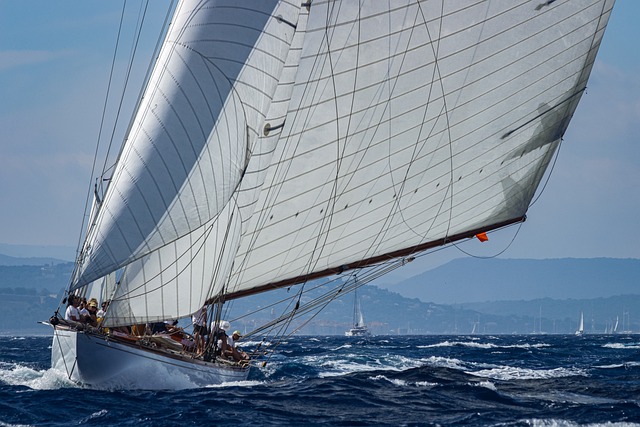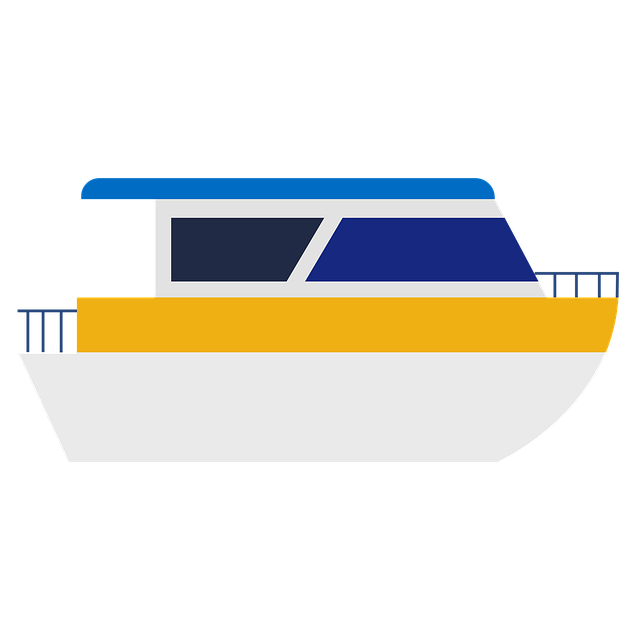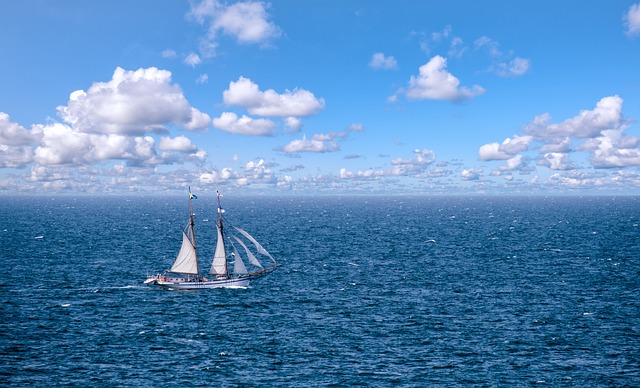Embarking on an offshore sailing journey necessitates meticulous planning and selection of equipment that stands up to the challenges of the high seas. A key component in this equation is the marine battery, which powers everything from navigation systems to communication devices. This article delves into the top three marine battery types pivotal for offshore voyages: Lead-Acid, AGM (Absorbent Glass Mat), and Lithium. Each type offers distinct advantages and considerations for sailors. From reliability and affordability to high performance and spill-proof designs, understanding the nuances of each will ensure your marine battery is as dependable as the horizon is vast. Join us as we navigate through the types of marine batteries best suited for offshore sailing, their pros and cons, and offer guidance on maintaining your power source across the open ocean.
- Understanding the Role of Marine Batteries in Offshore Sailing
- Types of Marine Batteries for Offshore Sailing
- – Lead-Acid Marine Batteries: Reliability and Affordability
- – AGM (Absorbent Glass Mat) Marine Batteries: Spill-Proof and Durable
- – Lithium Marine Batteries: High Performance for Long Voyages
- Factors Influencing the Choice of Marine Battery for Offshore Sailing
- Lead-Acid Marine Batteries: The Traditional Power Source
- – Pros and Cons of Lead-Acid Marine Batteries in Offshore Contexts
Understanding the Role of Marine Batteries in Offshore Sailing

Marine batteries play a pivotal role in offshore sailing, serving as the lifeline for all electrical needs on board. These specially designed batteries are tasked with powering navigation equipment, communication devices, and other essential systems when the vessel is underway or at anchor, ensuring that the crew can maintain connectivity and operational capability without the aid of an external power source. Offshore sailing demands reliability and durability from marine batteries due to the harsh conditions they face, including temperature extremes, vibrations, and moisture. As a result, marine batteries are constructed with heavy-duty materials and sealed lead-acid (SLA) or AGM (Absorbent Glass Mat) technology to prevent leakage and corrosion, while also offering deep discharge capabilities that land-based counterparts cannot match. The choice between different types of marine batteries—lead-acid, AGM, or lithium ion—depends on factors such as the vessel’s power requirements, space constraints, and the expected duration of the voyage. Each type has its advantages; for instance, AGM batteries are favored for their maintenance-free design and ability to withstand shock and vibration, making them ideal for the dynamic environment of offshore sailing. In contrast, lithium ion batteries offer lighter weight and a greater number of charge/discharge cycles, which can be advantageous in long-term voyages where weight reduction and energy efficiency are paramount. Understanding the specific needs and conditions of offshore sailing is crucial when selecting the appropriate marine battery, as it directly impacts safety, functionality, and the overall success of the voyage.
Types of Marine Batteries for Offshore Sailing

When venturing out on an offshore sailing expedition, selecting the appropriate marine battery is crucial for the journey’s success. Marine batteries differ from their automotive counterparts primarily in their construction and design, which are tailored to withstand the corrosive saltwater environment and the rough conditions that characterize life at sea. There are three main types of marine batteries commonly used by offshore sailors: lead-acid, AGM (Absorbed Glass Mat), and lithium-ion.
Lead-acid batteries have been the traditional choice for marine applications due to their reliability and cost-effectiveness. They are robust and provide a long service life; however, they do require regular maintenance and can be prone to corrosion if not properly cared for. These batteries are well-suited for starting engines or as deep-cycle units for trolling motors, but their weight can be a drawback in sensitive load applications.
Advancing technology has led to the development of AGM and lithium-ion marine batteries, which offer enhanced performance over traditional lead-acid types. AGM batteries, for instance, provide improved vibration resistance, longer life, and better tolerance to extreme temperatures. They are maintenance-free and spill-proof, making them a preferred choice for many sailors. Lithium-ion marine batteries, on the other hand, are lighter in weight and offer more energy per pound than their lead-acid counterparts. They also have a higher number of charge/discharge cycles and can retain a full charge at lower temperatures, which is particularly advantageous in colder offshore conditions. When selecting a marine battery for offshore sailing, it’s important to consider the specific needs of your vessel, including power requirements, load capacity, and environmental conditions, to ensure a reliable energy source throughout your journey.
– Lead-Acid Marine Batteries: Reliability and Affordability

Lead-acid marine batteries have long been a staple in the offshore sailing community due to their reliability and affordability. These batteries are known for their robust construction, capable of handling the rigorous demands of maritime environments. They offer a dependable energy storage solution that’s resistant to the corrosive effects of saltwater and humidity, which can be detrimental to other types of marine batteries. The lead-acid technology provides a high initial voltage, making it easier for starting engines and powering essential onboard equipment. Additionally, these batteries are widely available, ensuring that sailors can access replacements or maintenance materials with ease. While modern advancements have led to the development of more sophisticated battery types, the tried-and-true performance of lead-acid marine batteries continues to make them a top choice for many offshore enthusiasts who value reliability and affordability in their navigation systems and onboard electronics.
Furthermore, there are different varieties within the lead-acid category, including flooded lead-acid (FLA) and absorbent glass mat (AGM) designs. FLA batteries are known for their large capacity and long service life but require regular maintenance to prevent spillage of their electrolyte solution. AGM batteries, on the other hand, offer a spill-proof design with similar performance characteristics, making them an excellent option for those who prefer a low-maintenance lead-acid battery without compromising on power. When selecting a lead-acid marine battery, it’s important to consider factors such as the boat’s electrical load, the expected duration of sailing without recharging, and the specific demands of the onboard systems. With careful selection and proper maintenance, lead-acid marine batteries can provide the consistent and reliable power necessary for safe and successful offshore sailing adventures.
– AGM (Absorbent Glass Mat) Marine Batteries: Spill-Proof and Durable

When venturing out on an offshore sailing journey, selecting the right marine battery is paramount for the reliability and safety of your voyage. Among the most popular types of marine batteries are AGM (Absorbent Glass Mat) marine batteries, which are renowned for their spill-proof nature and durability. These batteries consist of a paste made from plates submerged in a liquid electrolyte, eliminating the risk of acid leaks that can be problematic with traditional lead-acid batteries. This design not only makes them safer for use onboard but also more resistant to the harsh conditions often encountered at sea, such as temperature fluctuations and rough handling. AGM marine batteries are also designed to handle deep discharges, which means they can be regularly depleted without compromising their lifespan or performance. This characteristic is particularly valuable for offshore sailing, where power needs can fluctuate significantly due to varying sails, weather conditions, and equipment usage. Their robust construction ensures long-term reliability, making them a top choice for sailors who demand consistent power in the most demanding environments. Additionally, AGM marine batteries offer a high initial voltage, providing more power immediately after being charged, which is crucial when you need to start your engines or operate critical onboard systems. Their ability to perform consistently under diverse conditions makes them an indispensable component of any offshore sailing setup.
– Lithium Marine Batteries: High Performance for Long Voyages

Factors Influencing the Choice of Marine Battery for Offshore Sailing

When selecting a marine battery for offshore sailing, several critical factors influence the choice to ensure optimal performance and longevity at sea. Firstly, the type of vessel and its power requirements dictate the size and capacity of the battery needed. Larger yachts with more electrical devices will necessitate higher-capacity batteries to support increased energy consumption. Additionally, the expected cruising duration without access to charging sources is a significant consideration; deep-cycle marine batteries are preferred due to their ability to withstand multiple discharge-recharge cycles, which is essential for extended voyages.
Secondly, the nature of offshore sailing environments demands batteries resistant to harsh conditions such as saltwater corrosion, humidity, and temperature extremes. Flooded lead-acid batteries require regular maintenance, making them less favorable compared to maintenance-free options like AGM (Absorbed Glass Mat) or lithium-ion batteries. These latter types offer superior performance in a wide range of temperatures and are less prone to the detrimental effects of vibrations and shocks commonly encountered on a rocking boat. Furthermore, the weight of the battery system is an important aspect, as reducing overall vessel weight can improve fuel efficiency and speed. Lastly, the cost of the battery must be weighed against its expected lifespan and performance; investing in a higher-quality marine battery can provide long-term savings and peace of mind for sailors embarking on offshore adventures.
Lead-Acid Marine Batteries: The Traditional Power Source

Lead-acid marine batteries have long been the traditional power source for offshore sailing, offering a reliable and proven performance in harsh maritime conditions. These batteries are known for their durability and resilience, making them a go-to option for seafarers who require consistent energy for extended periods. The design of lead-acid marine batteries is tailored to withstand the corrosive saltwater environment and the mechanical stresses encountered during voyages. Their robust construction and deep discharge capabilities ensure that they can provide the necessary power for starting engines, running navigation equipment, and illuminating accommodation spaces even when not connected to the grid. While modern advancements have introduced more sophisticated battery types, lead-acid batteries remain a popular choice among seasoned sailors due to their cost-effectiveness, availability, and tried-and-true reliability in maritime applications. When selecting a lead-acid marine battery, it’s important to consider the battery’s ampere-hour (Ah) rating and its ability to handle the expected loads and conditions, as these factors will influence the battery’s performance and longevity on the open sea.
– Pros and Cons of Lead-Acid Marine Batteries in Offshore Contexts

When venturing out into the vast expanse of the open sea, selecting the right marine battery is paramount for the sustainability and safety of your offshore sailing endeavors. Lead-acid marine batteries have been a staple in the maritime community due to their reliability and cost-effectiveness. These batteries are well-suited for applications that require deep discharges, such as starting an engine or supplying short bursts of power. A primary advantage of lead-acid marine batteries is their robust construction; they can withstand the rough conditions often encountered at sea without compromising performance. Additionally, their familiarity and widespread availability make them a go-to choice for many sailors.
However, lead-acid marine batteries also present some challenges. They are notably heavier than other types of marine batteries, which can be a significant consideration when every pound counts on a sailboat. Furthermore, their lifespan is generally shorter compared to more modern alternatives; frequent deep discharges can reduce their efficiency over time. Maintenance is also a factor, as lead-acid batteries require regular topping up with distilled water and can be hazardous if not handled correctly, due to the toxic nature of lead and sulfuric acid they contain. Despite these drawbacks, lead-acid marine batteries remain a popular choice for many offshore sailors, offering a balance between performance, cost, and proven reliability in demanding conditions at sea.
